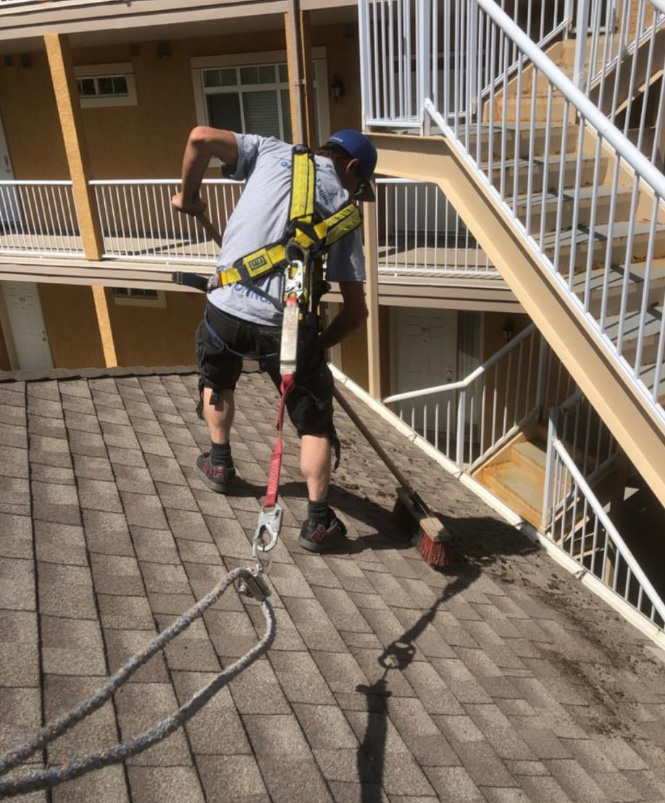All About Roof Inspections

Homeowners are generally aware of the importance of having your roof inspected after a major weather event, such as a significant wind or hailstorm, in order to repair any damage before it causes further problems for your roof and your home. However, it’s a very good idea to actually schedule an annual roof inspection, with or without weather events or other known damages. Wear-and-tear to your roof can build up over time, in with regular roof inspections, you can extend the life of your roof and prevent damage to your home.
While you can check yourself for obvious problems such as missing shingles and visible leaks, a professional roof inspection will give you a lot more information about the condition of your roof. A roof inspector will assess the structure, materials, interiors, and workmanship of your roof, and give you a thorough report of their findings. With the structural inspection, the inspector will assess your roof for signs of sagging and unevenness; damage to chimneys, gutters and soffits; and any issues with the venting in your attic. For the material inspection, your inspector will examine the condition of the roofing materials, looking for loose or damaged roofing materials, deterioration of any seals and flashing around vent pipes, and accumulation of moss, lichen or rust.
The interior inspection involves checking your attic and interior ceilings and walls for any signs of moisture including stains, dampness, mold, and rot. Finally, the inspector will assess the quality of the workmanship on your roof, and note any issues that may increase the likelihood of leaks or damage in the future, for example, improperly installed skylights or poorly-adhered shingles. Once the inspection is complete, you should expect to receive a written report of findings, with suggestions for actions to take to maximize the lifespan of your roof.
You may ask yourself, when should I schedule a room inspection? The best time to get this work done is in the fall, for a few good reasons. First, you want to know if there are any structural or material issues that need to be remedied before winter weather sets in, to reduce the risk of leaks and damages over the winter. This is especially important because many adhesives are less effective in very cold weather, so emergency repairs performed in the middle of the winter may be less effective. Also, treatments for moss and lichen work best when applied and given many weeks or months to take effect, and you can apply these products in the fall and then clean up the debris in the spring.
You will also be able to schedule repairs when it is convenient for you and your roofing contractor, and you won’t have to bear the cost of urgent or emergency repair calls. Finally, you don’t want to have to go up on your roof for emergency repairs in poor weather, for safety reasons.
If your roof is less than five years old, you can probably get by with a visual inspection from ground level or a ladder, but once your home’s roof has seen a few winters, it will give you peace of mind to schedule an annual inspection, and you’ll likely save money in the long run.

